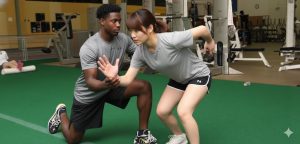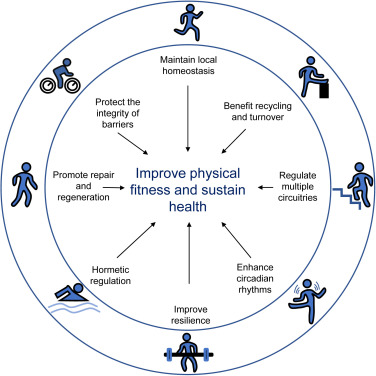
How Strength Coaches Evaluate Athletic Performance
Introduction: Measuring What Truly Matters
You can’t improve what you don’t measure.
In strength and conditioning, the best coaches don’t just guess whether their athletes are “getting better” — they measure, track, and analyse performance across multiple domains. Because elite results don’t come from luck. They come from data, science, and precise evaluation. This is how professional strength coaches, including NASC-certified practitioners, evaluate performance — not just to test strength, but to build champions.
1. Strength: The Foundation of All Performance
Strength is the cornerstone of almost every sport. It determines how much force an athlete can generate, control, and sustain. Coaches typically measure maximal strength using standardized protocols such as:
-
1RM (One Repetition Maximum) — Squat, bench press, or deadlift to assess raw force output.
-
Isometric Mid-Thigh Pull (IMTP) — Measures force production without movement, useful for tracking neural adaptations.
-
Relative Strength Index (RSI) — Evaluates power-to-bodyweight ratio, crucial for weight-class athletes.
Key takeaway:
True strength isn’t just about lifting heavy — it’s about producing force efficiently, consistently, and safely.
2. Power: Translating Strength Into Speed
An athlete who can generate force quickly dominates in almost every sport — from sprinting and jumping to combat and field performance.
Coaches assess power output using:
-
Vertical Jump / Countermovement Jump (CMJ) — Using a force plate or jump mat to measure explosive lower-body power.
-
Medicine Ball Throw / Power Clean — Assessing upper-body and total-body power transfer.
-
Bar Velocity Tracking — Devices like linear position transducers measure how fast the bar moves at specific loads.
Key takeaway:
Power = Force × Velocity.
Without velocity, strength alone won’t translate to performance.
3. Speed & Agility: Performance in Motion
Strength coaches evaluate movement efficiency and reactivity, not just straight-line speed.
Testing methods include:
-
10m / 20m / 40m Sprint Tests — For acceleration and top-end speed.
-
Pro-Agility (5-10-5 Shuttle) — Measures change-of-direction speed and control.
-
T-Test / Illinois Agility Test — Evaluates multi-directional movement relevant to sport-specific demands.
These tests provide insight into how well strength training carries over to actual athletic movement.
Key takeaway:
Strength means little if the athlete can’t apply it dynamically under pressure.
4. Endurance & Work Capacity: Sustaining Output
Even in strength-based sports, endurance matters — not just aerobic fitness, but the ability to sustain high-intensity efforts repeatedly.
Coaches evaluate this through:
-
Yo-Yo Intermittent Recovery Test / Beep Test — For overall aerobic and anaerobic capacity.
-
Repeated Sprint Ability (RSA) Test — Measures performance decay across multiple sprints.
-
Work-to-Rest Ratios — Calculated from time-motion data in actual gameplay or event simulation.
✅ Key takeaway:
An athlete’s engine determines how well they can repeat explosive actions without burnout.
5. Mobility, Stability & Movement Quality
A high-performing athlete must move efficiently — strong and fast, but also controlled and symmetrical. Strength coaches screen and assess movement to reduce injury risk and enhance transfer of training.
Common tools include:
-
Functional Movement Screen (FMS)
-
Overhead Squat Analysis
-
Range of Motion (ROM) Testing
Key takeaway:
Mobility without stability leads to instability. Stability without mobility leads to stiffness.
Performance requires both.
6. Monitoring Fatigue & Readiness
Performance isn’t linear — even the best athletes have good and bad days.
That’s why NASC-trained coaches monitor daily readiness and fatigue trends to optimise training load.
Objective and subjective tools include:
-
Heart Rate Variability (HRV) – Assesses nervous system recovery.
-
Session RPE (Rate of Perceived Exertion) – Athlete’s internal load perception.
-
Wellness Questionnaires / Sleep Tracking – Simple but effective indicators of overall recovery.
Key takeaway:
Testing without monitoring is incomplete. Performance data must guide decision-making — not ego.
7. Integration: Turning Data Into Decisions
Great coaches don’t collect data for the sake of numbers — they interpret it to make better training calls.
For example:
-
If an athlete’s jump height drops 10%, intensity may need to be reduced.
-
If bar velocity increases, load progression is justified.
-
If HRV remains low for multiple days, recovery intervention is prioritised.
This integration of sport science, data, and coaching intuition is what defines a high-performance system.
The NASC Standard: Scientific Coaching in Practice
NASC coaches are trained to combine field testing, lab assessment, and athlete monitoring into one coherent system.
Our certification programs teach:
-
Evidence-based test selection and protocols
-
Data interpretation for performance tracking
-
Injury-prevention screening
-
Performance profiling for sport-specific needs
At NASC, testing is not an event — it’s a continuous feedback loop between athlete and coach.
Conclusion: Testing Is Coaching
The best strength coaches aren’t just motivators — they’re scientists in the field. They don’t rely on guesswork or “feel” — they rely on data, observation, and adaptation. Because in the science of performance, you can only improve what you measure — and you can only measure what you understand.
That’s the NASC difference: science applied to human performance.
References
-
Hoffman, J. R. (2014). Physiological testing of the high-performance athlete. Human Kinetics.
-
Kraemer, W. J., & Fleck, S. J. (2017). Optimizing strength training: Designing nonlinear periodization workouts. Human Kinetics.
-
Jeffreys, I. (2016). Strength and Conditioning for Sports Performance. Routledge.




